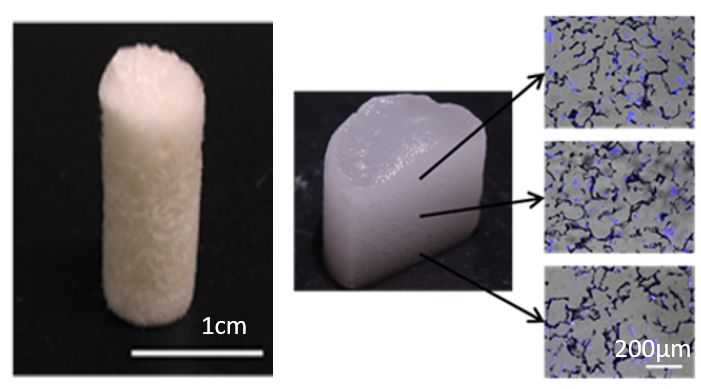This technology enables efficient extraction of collagen protein from bullfrog skin. Based on this, newly developed biomaterials and 3D scaffolds can be used as bone graft substitutes in dental implant procedures, promoting alveolar ridge preservation without the need for a bone membrane flap. The designed porous 3D structure also makes it suitable for tissue engineering applications, such as scaffolds for bone, cartilage, and other tissue regeneration, applicable to orthopedic and maxillofacial surgeries, promoting bone regeneration and integration.
This is a technology to transform food waste to value biomaterials. Food waste such as discarded bullfrog skin and fish scales can be used to develop mineralized collagen sponge-like material, and a highly porous 3-dimensional (3D) collagen-hydroxyapatite socket plug. The developed biomaterial and 3D scaffold can be applied to facilitate "flapless" alveolar ridge preservation, providing a solution that overcomes the limitations of conventional bone grafting materials. promoting bone regeneration while eliminating the need for a surgical "flap." As a result, patients may experience an improved overall dental implant experience.



